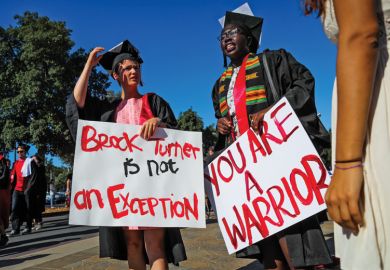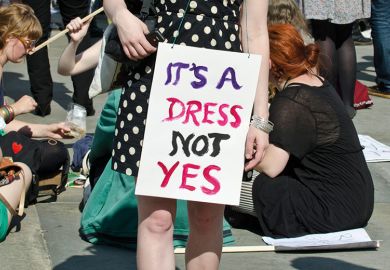Australia’s nationwide survey of sexual assault and harassment in universities provides a model for other leading higher education systems to follow, researchers say.
The Australian Human Rights Commission’s survey of 30,000 students in all of the country’s universities was the first national study of its kind in the world and sparked renewed commitments from institutions and policymakers to tackle the problem.
Among a long list of concerning findings, the study found that one in 10 female students at Australian universities said that they had been sexually assaulted within the past two years, and that half of all students (51 per cent) said that they had been sexually harassed during 2016.
However, the vast majority of victims said that they had not made a formal report or complaint to their higher education institution. Only 6 per cent of students felt that their university was doing enough to provide clear and accessible information on sexual harassment procedures, policies and support services, and this figure fell to 4 per cent in relation to sexual assault.
With the US and UK also grappling with rising concern about sexual violence on campus, researchers have suggested that the Australian approach might provide a powerful call to action elsewhere, too.
Sexual violence researcher Michelle Munro-Kramer, an assistant professor in the University of Michigan’s School of Nursing, said her personal opinion was that a similar national survey in the US would be “helpful”.
“As a researcher I believe that data is necessary to inform interventions, change policy, and ultimately influence the flow of money towards necessary public health interventions,” Professor Munro-Kramer said. “National-level data on sexual violence among our young people, including those in college and those in the community, has the potential to be a driving force to tackle this public health problem.”
Professor Munro-Kramer said that there would be a number of barriers to such an exercise, including different definitions of sexual violence by state and university. But she argued that it was “important to find solutions to these barriers so that the US can consider national level approaches”.
Carolyn Jackson, a professor in Lancaster University’s department of educational research, said that surveys conducted in the UK had been “on a much smaller scale” than the Australian one.
“National surveys are generally more likely to be taken seriously by institutions,” she said.
However, Professor Jackson cautioned that critiques of the Australian survey would need to be taken into account, and that national survey data “needs to be read and used alongside the rich data provided by qualitative methods”.
The Australian survey found that, overall, 6.9 per cent of students had been sexually assaulted in the past two years, with 1.9 per cent saying that the attack occurred in a university setting (including travel to or from campus).
Women were almost twice as likely as men to report sexual harassment.
About half of the victims of sexual harassment or assault in a university setting said that they knew some or all of the perpetrators, with the perpetrators being male in the majority of cases (71 per cent for sexual harassment, and 83 per cent for sexual assault).
Register to continue
Why register?
- Registration is free and only takes a moment
- Once registered, you can read 3 articles a month
- Sign up for our newsletter
Subscribe
Or subscribe for unlimited access to:
- Unlimited access to news, views, insights & reviews
- Digital editions
- Digital access to THE’s university and college rankings analysis
Already registered or a current subscriber?








